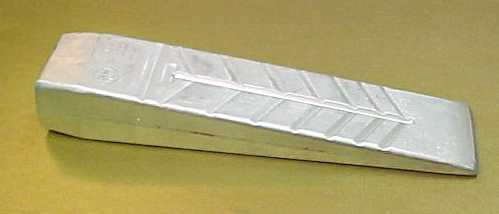In another thread recently posted, it was alleged by one fellow that steel wedges were unsuitable for felling trees. The feller using a steel wedge in a video was referred to as an idiot. Quite frankly, it's been a long time since I used a steel wedge, so I thought I would post this question.
I like the plastic wedges, they are easy to see when you lay them down and cheap to replace if you lose or damage them. They don't seem to hurt the chainsaw when you hit them, so there is a big advantage there. The ones with interlocking grooves seem to work pretty well for situations where you need an extra wide wedge.
On the other hand, there have been a few times where my plastic wedges would not drive in or lift the tree. This was a BIG problem. I believe that if I had a steel wedge at the time, my problems would have been nonexistent. I believe that a steel wedge will also drive and lift easier, because the steel will not compress, transferring the energy of the hammer into instant lifting motion.
I got stitches one time when a steel wedge popped out of a log, flew straight up into the air and came down on my hand, clearly not a problem with the plastic wedges which cannot even be used to split wood.
I think everyone who does this for a living should have some steel wedges for the big jobs, and plastic for the rest of the time.
Opinions? Comments?
I like the plastic wedges, they are easy to see when you lay them down and cheap to replace if you lose or damage them. They don't seem to hurt the chainsaw when you hit them, so there is a big advantage there. The ones with interlocking grooves seem to work pretty well for situations where you need an extra wide wedge.
On the other hand, there have been a few times where my plastic wedges would not drive in or lift the tree. This was a BIG problem. I believe that if I had a steel wedge at the time, my problems would have been nonexistent. I believe that a steel wedge will also drive and lift easier, because the steel will not compress, transferring the energy of the hammer into instant lifting motion.
I got stitches one time when a steel wedge popped out of a log, flew straight up into the air and came down on my hand, clearly not a problem with the plastic wedges which cannot even be used to split wood.
I think everyone who does this for a living should have some steel wedges for the big jobs, and plastic for the rest of the time.
Opinions? Comments?






